David Calhas
Deep Feedback Models
Sep 19, 2025Abstract:Deep Feedback Models (DFMs) are a new class of stateful neural networks that combine bottom up input with high level representations over time. This feedback mechanism introduces dynamics into otherwise static architectures, enabling DFMs to iteratively refine their internal state and mimic aspects of biological decision making. We model this process as a differential equation solved through a recurrent neural network, stabilized via exponential decay to ensure convergence. To evaluate their effectiveness, we measure DFMs under two key conditions: robustness to noise and generalization with limited data. In both object recognition and segmentation tasks, DFMs consistently outperform their feedforward counterparts, particularly in low data or high noise regimes. In addition, DFMs translate to medical imaging settings, while being robust against various types of noise corruption. These findings highlight the importance of feedback in achieving stable, robust, and generalizable learning. Code is available at https://github.com/DCalhas/deep_feedback_models.
The Role of Recurrency in Image Segmentation for Noisy and Limited Sample Settings
Dec 20, 2024Abstract:The biological brain has inspired multiple advances in machine learning. However, most state-of-the-art models in computer vision do not operate like the human brain, simply because they are not capable of changing or improving their decisions/outputs based on a deeper analysis. The brain is recurrent, while these models are not. It is therefore relevant to explore what would be the impact of adding recurrent mechanisms to existing state-of-the-art architectures and to answer the question of whether recurrency can improve existing architectures. To this end, we build on a feed-forward segmentation model and explore multiple types of recurrency for image segmentation. We explore self-organizing, relational, and memory retrieval types of recurrency that minimize a specific energy function. In our experiments, we tested these models on artificial and medical imaging data, while analyzing the impact of high levels of noise and few-shot learning settings. Our results do not validate our initial hypothesis that recurrent models should perform better in these settings, suggesting that these recurrent architectures, by themselves, are not sufficient to surpass state-of-the-art feed-forward versions and that additional work needs to be done on the topic.
EEG to fMRI Synthesis Benefits from Attentional Graphs of Electrode Relationships
Mar 07, 2022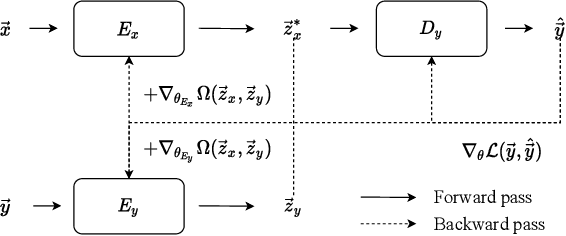

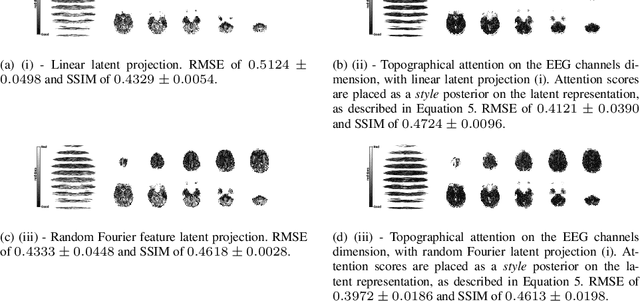

Abstract:Topographical structures represent connections between entities and provide a comprehensive design of complex systems. Currently these structures are used to discover correlates of neuronal and haemodynamical activity. In this work, we incorporate them with neural processing techniques to perform regression, using electrophysiological activity to retrieve haemodynamics. To this end, we use Fourier features, attention mechanisms, shared space between modalities and incorporation of style in the latent representation. By combining these techniques, we propose several models that significantly outperform current state-of-the-art of this task in resting state and task-based recording settings. We report which EEG electrodes are the most relevant for the regression task and which relations impacted it the most. In addition, we observe that haemodynamic activity at the scalp, in contrast with sub-cortical regions, is relevant to the learned shared space. Overall, these results suggest that EEG electrode relationships are pivotal to retain information necessary for haemodynamical activity retrieval.
EEG to fMRI Synthesis: Is Deep Learning a candidate?
Sep 29, 2020
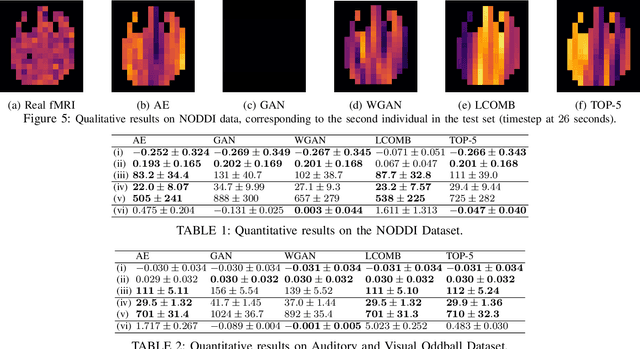
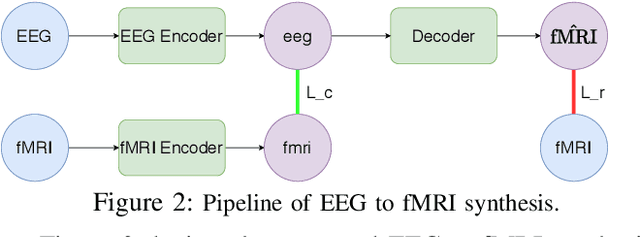

Abstract:Advances on signal, image and video generation underly major breakthroughs on generative medical imaging tasks, including Brain Image Synthesis. Still, the extent to which functional Magnetic Ressonance Imaging (fMRI) can be mapped from the brain electrophysiology remains largely unexplored. This work provides the first comprehensive view on how to use state-of-the-art principles from Neural Processing to synthesize fMRI data from electroencephalographic (EEG) data. Given the distinct spatiotemporal nature of haemodynamic and electrophysiological signals, this problem is formulated as the task of learning a mapping function between multivariate time series with highly dissimilar structures. A comparison of state-of-the-art synthesis approaches, including Autoencoders, Generative Adversarial Networks and Pairwise Learning, is undertaken. Results highlight the feasibility of EEG to fMRI brain image mappings, pinpointing the role of current advances in Machine Learning and showing the relevance of upcoming contributions to further improve performance. EEG to fMRI synthesis offers a way to enhance and augment brain image data, and guarantee access to more affordable, portable and long-lasting protocols of brain activity monitoring. The code used in this manuscript is available in Github and the datasets are open source.
fMRI Multiple Missing Values Imputation Regularized by a Recurrent Denoiser
Sep 26, 2020
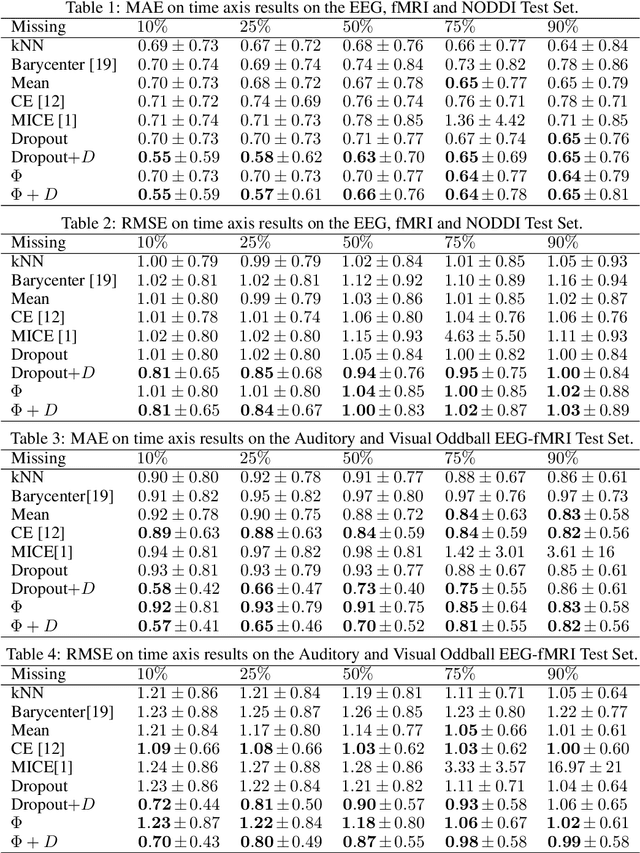
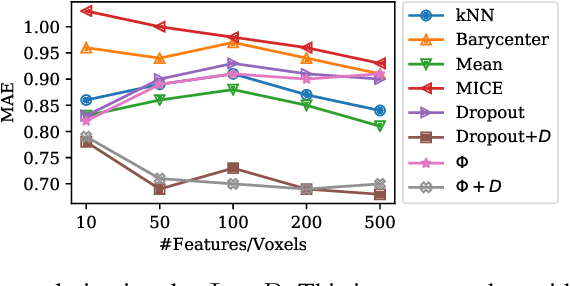

Abstract:Functional Magnetic Resonance Imaging (fMRI) is a neuroimaging technique with pivotal importance due to its scientific and clinical applications. As with any widely used imaging modality, there is a need to ensure the quality of the same, with missing values being highly frequent due to the presence of artifacts or sub-optimal imaging resolutions. Our work focus on missing values imputation on multivariate signal data. To do so, a new imputation method is proposed consisting on two major steps: spatial-dependent signal imputation and time-dependent regularization of the imputed signal. A novel layer, to be used in deep learning architectures, is proposed in this work, bringing back the concept of chained equations for multiple imputation. Finally, a recurrent layer is applied to tune the signal, such that it captures its true patterns. Both operations yield an improved robustness against state-of-the-art alternatives.
On the use of Pairwise Distance Learning for Brain Signal Classification with Limited Observations
Jun 05, 2019
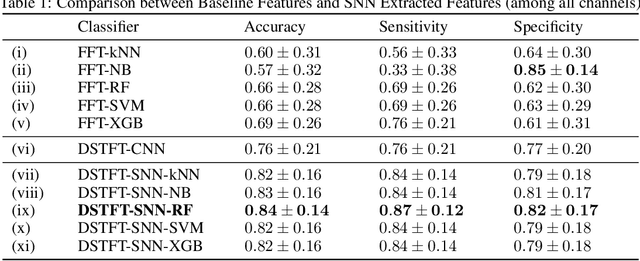
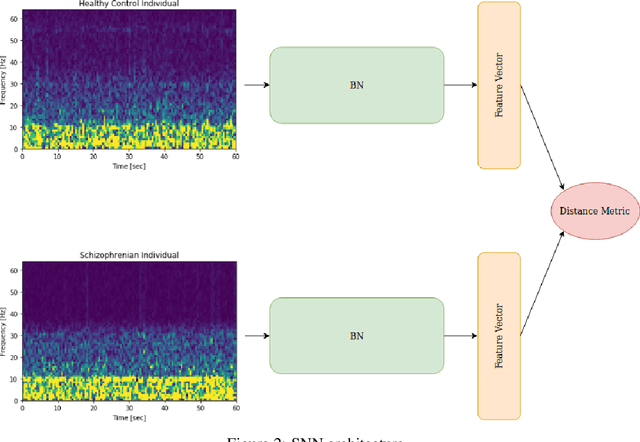

Abstract:The increasing access to brain signal data using electroencephalography creates new opportunities to study electrophysiological brain activity and perform ambulatory diagnoses of neuronal diseases. This work proposes a pairwise distance learning approach for Schizophrenia classification relying on the spectral properties of the signal. Given the limited number of observations (i.e. the case and/or control individuals) in clinical trials, we propose a Siamese neural network architecture to learn a discriminative feature space from pairwise combinations of observations per channel. In this way, the multivariate order of the signal is used as a form of data augmentation, further supporting the network generalization ability. Convolutional layers with parameters learned under a cosine contrastive loss are proposed to adequately explore spectral images derived from the brain signal. Results on a case-control population show that the features extracted using the proposed neural network lead to an improved Schizophrenia diagnosis (+10pp in accuracy and sensitivity) against spectral features, thus suggesting the existence of non-trivial, discriminative electrophysiological brain patterns.
 Add to Chrome
Add to Chrome Add to Firefox
Add to Firefox Add to Edge
Add to Edge